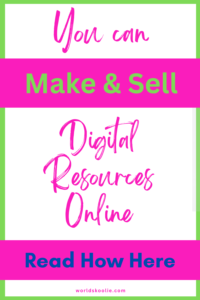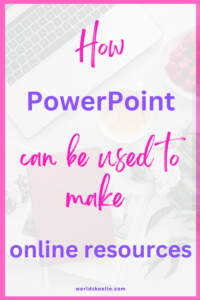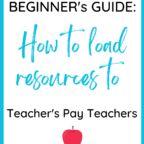In today’s digital age, online resources have become a valuable commodity for educators, professionals, and enthusiasts alike.
If you have knowledge or expertise in a particular subject and want to monetise it, PowerPoint can be an incredibly versatile and user-friendly tool to create visually appealing resources that you can sell online.
In this step-by-step guide, we will walk you through the process of leveraging PowerPoint to craft high-quality resources that captivate your target audience and generate revenue.
A Step-by-Step Guide to Using PowerPoint to Create and Sell Online Resources
1. Define your target audience and niche
Before diving into PowerPoint, it’s essential to identify your target audience and the specific niche or subject matter you plan to create resources for.
Understanding who your audience is will help tailor your content, design, and marketing efforts accordingly.

2. Plan and outline your resource
Take some time to plan and outline your resource. Determine its purpose, structure, and the key elements you want to include. A sketch in a notebook will do.
This will serve as a roadmap for your PowerPoint creation process and ensure a cohesive and well-organised end product.
3. Design your slides
PowerPoint offers a plethora of design options, enabling you to create visually appealing and professional-looking slides.
Start by selecting an appropriate theme or template that complements your content and enhances its visual appeal. Customise the layout, fonts, colours, and backgrounds to align with your brand or topic.

4. Create engaging content
With PowerPoint, you can seamlessly integrate various content types, such as text, images, graphs, charts, and multimedia elements.
Craft concise and informative text, use high-quality visuals, and leverage PowerPoint’s built-in tools to create engaging diagrams, infographics, or illustrations.
Keep in mind that your content should be informative, easy to understand, and visually appealing.
5. Utilise animations and transitions
PowerPoint’s animation and transition features can add dynamism and interactivity to your resource. Use them selectively and purposefully to highlight important points, guide the viewer’s attention, or create engaging effects.
Avoid overusing animations, as they can distract from the core content.
6. Add interactive elements
Make your resource more interactive by incorporating hyperlinks, clickable buttons, or navigation menus. This can enhance the user experience, allowing learners or customers to explore your resource in a non-linear and engaging way.

7. Proofread and edit
Before finalising your resource, meticulously proofread the content for spelling, grammar, and factual accuracy. Ensure consistency in formatting, style, and language.
Consider seeking feedback from peers or beta testers to identify any areas for improvement.
8. Export and save your resource
Once you’re satisfied with your resource, save it. Additionally, you might want to consider exporting your PowerPoint as a PDF or converting it into other formats like video, interactive webinars, or online courses to broaden your selling options.
9. Set up an online platform for selling
To sell your resources online, establish an online platform such as a website, an e-commerce store, or a digital marketplace.
You can also explore platforms specifically designed for digital downloads, such as TeachersPayTeachers, Etsy or Udemy, where you can showcase and sell your resources to a targeted audience.

10. Market and promote your resources
Develop a marketing strategy to reach your target audience effectively. Leverage social media, email marketing, content marketing, and SEO techniques to increase visibility and drive traffic to your sales platform.
Consider offering free samples or collaborating with influencers or industry experts to boost exposure and credibility.

PowerPoint is a powerful tool that empowers creators to design and sell high-quality online resources. By following this step-by-step guide, you can leverage PowerPoint to monetise your expertise while providing value to your audience.
Remember to consistently refine and update your resources to meet evolving needs and stay ahead in the competitive market of online education and resource creation.
Please pin this post to share.



Thanks!

Meagan





